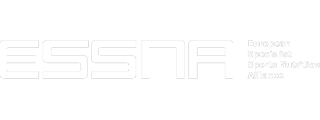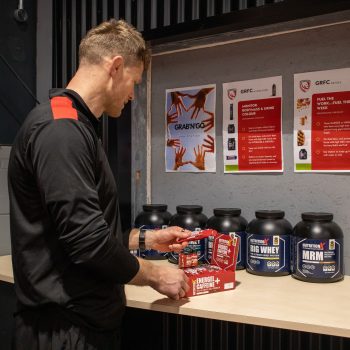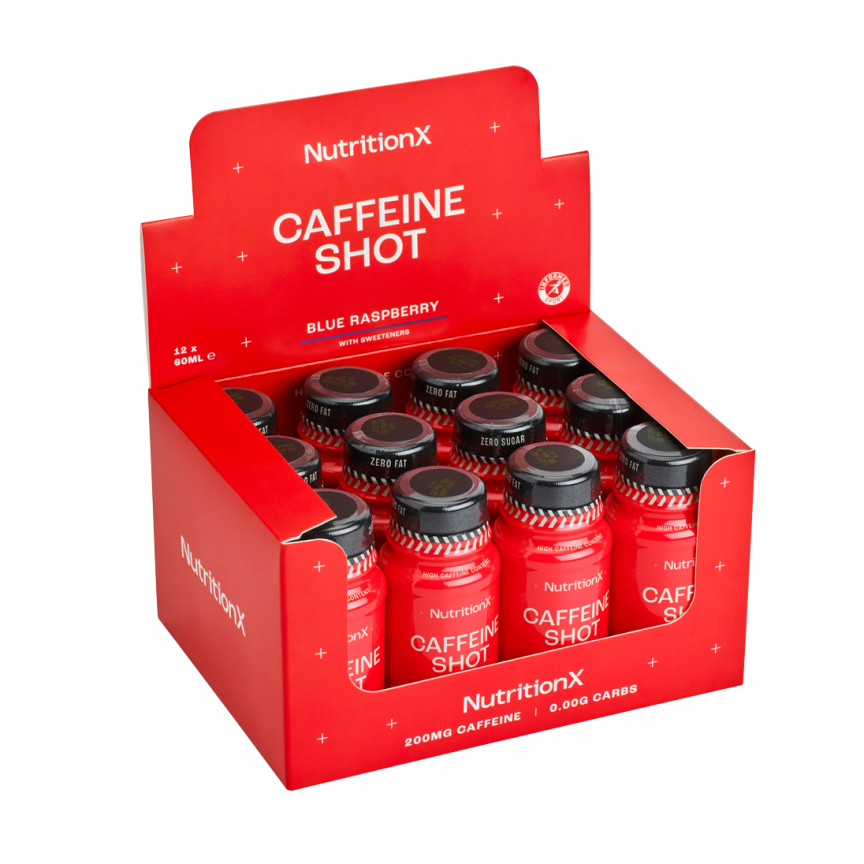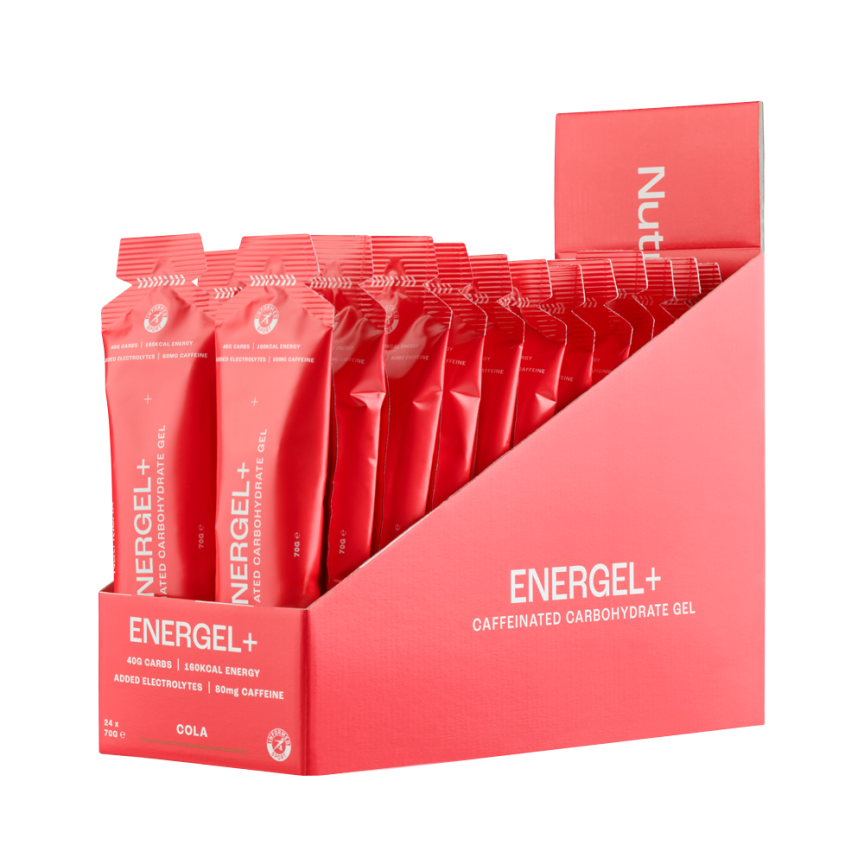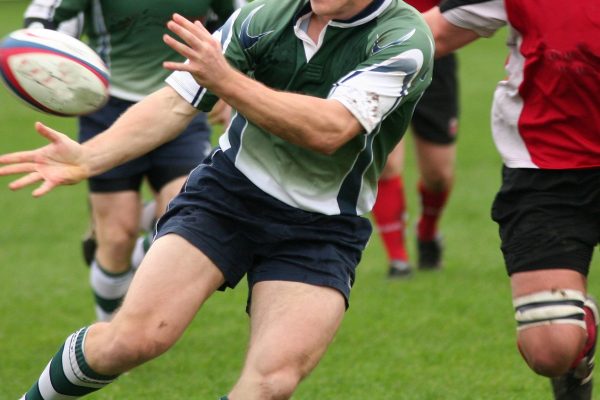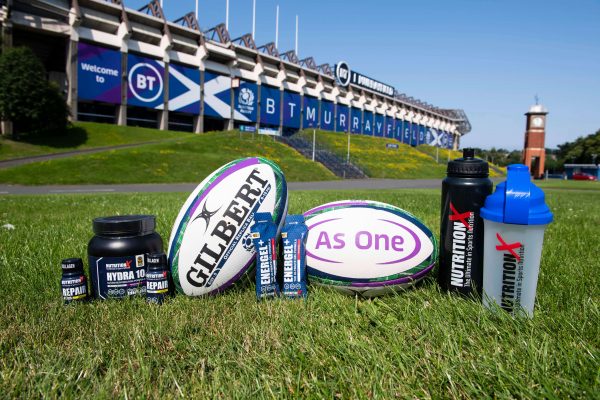We’re all very familiar with the purported benefits of consuming caffeine as part of our daily nutrition strategy, the majority of us turning to some sort of caffeinated drink, be it tea, coffee or a pre-workout shot, to help keep levels of alertness up throughout the day. Caffeine can also play a very important role for athletes looking to boost their performance levels, but how exactly should athletes go about incorporating it into their pre/mid training strategies to see the most benefit?
We turned to leading sports nutritionist James Hudson, Performance Nutritionist at club partners Gloucester Rugby and part of our very own expert panel, for his advice on how athletes can make the most of caffeine...
Goldilocks and the 3 T’s
“Having children means you get to revisit many traditional nursery rhymes and fairy tales and it never ceases to amaze me at how many applications to nutrition I find…or maybe that is my bias! In the tale of Goldilocks and the Three Bears, for example, upon trying the Daddy Bear, Mummy Bear and Baby Bear portions of porridge, Goldilocks finally exclaims: “This porridge is just right.” Now, whether the author was trying to make a nice reference to the decisions on carbohydrate portion sizes for athletes I’m not sure, but they do make the point that to be appealing and a habit repeated, we all need something to be ‘just right’.
When it comes to dietary supplements there are many borne of fairy tales, but of the few that work as performance aids, caffeine most definitely sits at the evidence-based table. Finding the ‘Goldilocks spot’ for how much caffeine to take and when is incredibly important, as too much may leave an athlete anxious and unable to execute specific skill components of their sport, and too little may be useless for acute performance but leave them unable to sleep after the final whistle has sounded.
So, let’s delve into caffeine and how we find your ‘Goldilocks’ strategy. As is often the case, the three T’s of Total, Type and Timing provide a great framework to explain this.
Total
When equating our total caffeine hit, we should think in mg (milligrams or thousandths of a gram) relative to our body mass and carefully assess the options to meet this Total; remember, they don’t have to all come from the same source. An amount of 3-6mg/kg body mass has consistently been shown to improve exercise performance and is the right place to start for your event target [1]. Now, if you are looking to improve performance specifically in the gym whilst resistance training, there is new evidence that a lower dose (0.9-2mg/kg) may still be prolific enough to improve strength and the speed at which you are shifting tin [2]. In real terms, for example in an 80kg athlete, a strength session may only require a piece of caffeine gum (100mg) or 1-2 gels (80-160mg), to see a meaningful improvement in session quality. When it comes to other sporting events, there is also strong evidence that 9mg/kg produces no further benefits in performance and increases the likelihood of severe negative side effects [3]. I would therefore keep 6mg/kg as the absolute maximum. This would give us a range of 240-480mg for an 80kg athlete and I would recommend starting at the lower end and gradually starting to find that Goldilocks spot.
Type
Now, when the bears went for their morning leg stretch leaving their breakfast to cool, they may have stopped off at one of the myriad of different beverage establishments along the way serving our most recognisable daily source of caffeine: coffee. Tea and chocolate are other sources often included in our daily diets, but the black elixir of productivity, coffee, is consumed across the globe in vast quantities daily.
However, the reason why I am going to suggest this isn’t your chosen source when it comes to potential performance benefits is just how unknown the quantity of caffeine is in your regular high street ‘capa-choo-choo’. A study of readily available outlets demonstrated espresso drinks varied in caffeine content from between 25-214mg in one serving! [4]. More precision is needed and the use of tablets, shots, gels and gums, where the amount is much more consistent, should form the basis of your plan.
What is important to note, though, is that your choice of delivery system to meet your Total target will influence the Timing of when you take it.
Timing
When ingesting caffeine in the form of tablets, drinks or shots, the start point for timing pre-event is 60 min as blood levels are observed to reach their peak after this time [5]. Therefore, team sport athletes, or those utilising caffeine before intense strength power events, should use this ‘1 hour before kick-off’ guide as a start point, to then tweak if they feel the effects are being felt earlier or later.
We must think, though, that when it comes to endurance events potentially lasting several hours, when do we want this boost? It may be that a quicker delivery system is advantageous at a point in the race when deep fatigue sets in, or in the latter stages of an event to get over the line. Caffeine chewing gums have been shown to improve aspects of performance such as jumping and peak power when consumed as little as 10 minutes pre-exercise [6, 7]. Carbohydrate gels form part of many endurance athletes’ routines, so the inclusion of caffeine with these may also provide a quickly delivered solution with the effects being observed after ten minutes rather than an hour [8, 9]. These varying choices present team sport athletes with the choice of a shot for example 1 hour before KO and then another smaller dose utilising gum or a gel at half time, harnessing the effect of Timing and keeping to a measured Total.
Finally, prior to deciding upon your strategy, think of your risk-benefit balance and recovery from the event. Sleep is a pillar of recovery easily disrupted with anxiety of the performance and ‘replaying’ the game afterwards in one’s mind. These symptoms can be heightened if the caffeine dose is too high and especially if the event is in the evening closer to normal sleep onset such as in evening team sport matches [10].
The biggest tip I can give you is practice. Never, never go into an event trying caffeine for the first time. Find your Goldilocks spot in training so it becomes second nature and then have the confidence to integrate it into your performance plan. When you get it ‘just right’ the benefits can be some of the best non-fiction.
References
- Guest, N.S., et al., International society of sports nutrition position stand: caffeine and exercise performance. J Int Soc Sports Nutr, 2021. 18(1): p. 1.
- Grgic, J., Exploring the minimum ergogenic dose of caffeine on resistance exercise performance: a meta-analytical approach. Nutrition, 2022: p. 111604.
- Graham, T.E. and L.L. Spriet, Metabolic, catecholamine, and exercise performance responses to various doses of caffeine. J Appl Physiol (1985), 1995. 78(3): p. 867-74.
- Desbrow, B., et al., An examination of consumer exposure to caffeine from retail coffee outlets. Food Chem Toxicol, 2007. 45(9): p. 1588-92.
- Graham, T.E., Caffeine and exercise: metabolism, endurance and performance. Sports Med, 2001. 31(11): p. 785-807.
- Ranchordas, M.K., et al., Effect of caffeinated gum on a battery of rugby-specific tests in trained university-standard male rugby union players. J Int Soc Sports Nutr, 2019. 16(1): p. 17.
- Annunziata, R., et al., bHLH-PAS protein RITMO1 regulates diel biological rhythms in the marine diatom Phaeodactylum tricornutum. Proc Natl Acad Sci U S A, 2019.
- Cooper, R., et al., Effects of a carbohydrate and caffeine gel on intermittent sprint performance in recreationally trained males. Eur J Sport Sci, 2014. 14(4): p. 353-61.
- Scott, A.T., et al., Improvement of 2000-m rowing performance with caffeinated carbohydrate-gel ingestion. Int J Sports Physiol Perform, 2015. 10(4): p. 464-8.
- Dunican, I.C., et al., Caffeine use in a Super Rugby game and its relationship to post-game sleep. Eur J Sport Sci, 2018. 18(4): p. 513-523.


